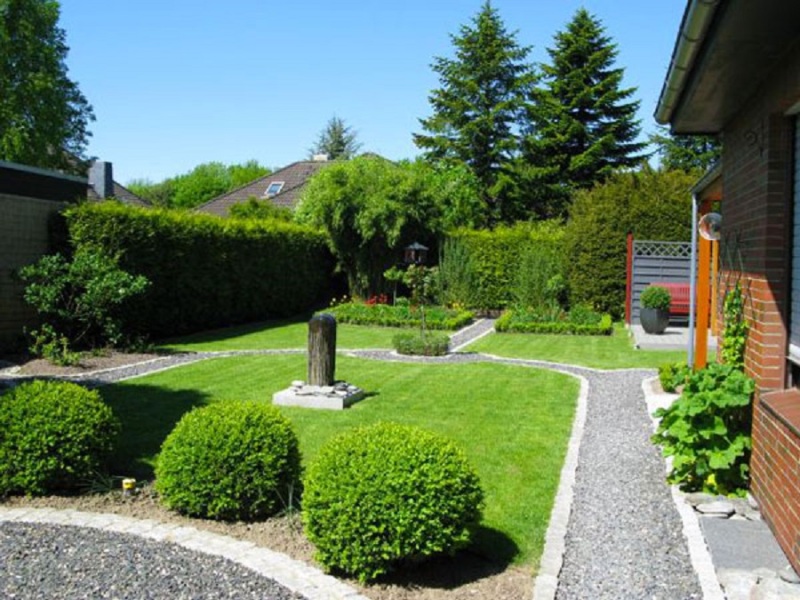
Traditional grass lawns have long been a staple of garden design, but they come with challenges—high water consumption, frequent mowing, and susceptibility to pests. Tapestry lawns provide a more sustainable alternative, replacing conventional grass with a mix of low-growing plants that create a rich, textured ground cover. These diverse plantings enhance biodiversity, reduce maintenance, and contribute to a healthier environment while offering a visually striking alternative to uniform turf.
The Benefits of Tapestry Lawns Over Traditional Grass
One of the biggest advantages of a tapestry lawn is reduced water consumption. Unlike grass, which requires frequent watering to stay green, many plants used in a tapestry lawn are drought-resistant, making them ideal for sustainable landscaping. This is particularly beneficial in areas prone to dry spells, where water conservation is a priority.
Tapestry lawns also require less mowing. Traditional lawns often need weekly trimming, but a well-planned tapestry lawn consists of slow-growing plants that maintain a natural, low-profile appearance without constant upkeep. This reduces the reliance on fuel-powered mowers, lowering carbon emissions and making garden maintenance more eco-friendly.
Another key benefit is enhanced biodiversity. A diverse combination of flowering plants, herbs, and low-growing ground cover attracts pollinators such as bees and butterflies, supporting local ecosystems. Unlike a monoculture grass lawn, which offers little ecological value, a tapestry lawn provides shelter and food for beneficial insects, birds, and other wildlife.
Soil health is also improved with a tapestry lawn. The varied root systems of different plants help prevent compaction, allowing better water infiltration and nutrient retention. This creates healthier, more resilient soil that supports plant life without the need for chemical fertilisers.
Selecting Diverse, Low-Growing Plants for a Tapestry Effect
Choosing the right combination of plants is essential for a successful tapestry lawn. The key is to select species that thrive in similar conditions, ensuring they complement each other in growth habits and seasonal interest.
Flowering plants add bursts of colour while attracting pollinators. Some excellent choices include:
- Thyme (Thymus serpyllum) – A fragrant, creeping herb that produces delicate purple flowers while withstanding foot traffic.
- Creeping Chamomile (Chamaemelum nobile) – Offers a soft, cushion-like texture and produces small, daisy-like flowers.
- Self-Heal (Prunella vulgaris) – A hardy plant with purple flowers that supports bees and other beneficial insects.
Green ground covers provide a lush, textured carpet while requiring minimal upkeep:
- Corsican Mint (Mentha requienii) – A tiny-leaved, aromatic plant that spreads quickly without overwhelming other species.
- Clover (Trifolium repens) – A nitrogen-fixing plant that enriches the soil while staying low to the ground.
- Mazus (Mazus reptans) – A fast-growing, low-maintenance ground cover that thrives in various conditions.
For added variation, foliage plants can be included to enhance texture and colour contrast:
- Ajuga (Ajuga reptans) – A hardy, spreading plant with deep green or bronze foliage.
- Sedum (Sedum acre) – A succulent ground cover that adds drought tolerance to the mix.
- Dichondra (Dichondra repens) – A trailing plant with round leaves that creates a soft, carpet-like appearance.
When selecting plants, consider sunlight exposure, soil type, and moisture levels. A successful tapestry lawn should feature plants with similar growth rates to prevent more aggressive species from overtaking the mix.
Maintenance Tips for a Thriving, Eco-Friendly Lawn
While tapestry lawns require less upkeep than traditional grass, they still benefit from occasional maintenance to keep them looking their best.
Weed control is important, especially during the initial establishment phase. Since tapestry lawns contain various species, pulling weeds manually is preferable to using chemical herbicides, which can harm desirable plants and beneficial insects.
Watering needs vary depending on the plant mix. Many species used in a tapestry lawn are drought-tolerant, but during prolonged dry periods, occasional watering helps maintain vibrancy. Drip irrigation or soaker hoses provide efficient watering while reducing waste.
Trimming and shaping certain plants ensures a neat appearance without overgrowth. While most tapestry lawn species are naturally low-growing, occasional trimming of faster-growing varieties helps maintain an even texture.
Seasonal care keeps the tapestry lawn resilient year-round. Adding a light layer of compost in autumn enriches the soil, while gentle raking in spring helps aerate the ground and prevent matting. Avoid heavy fertilisers, as many plants used in tapestry lawns prefer nutrient-rich but balanced conditions without excessive feeding.
A Vibrant and Sustainable Alternative
Tapestry lawns offer an innovative, eco-friendly solution for those seeking a beautiful and low-maintenance landscape. By replacing traditional grass with a mix of diverse, resilient plants, gardeners can reduce water usage, support local wildlife, and create visually stunning outdoor spaces. Whether used in full-sun gardens, shaded courtyards, or sloped areas, a tapestry lawn is a step towards more sustainable gardening.
FAQs
Can a tapestry lawn handle foot traffic?
Yes, but plant selection is key. Hardy varieties like thyme, clover, and chamomile tolerate light to moderate foot traffic, while more delicate species should be placed in low-traffic areas.
Do tapestry lawns attract pests?
Not more than a traditional lawn. In fact, they often attract beneficial insects that help control common garden pests naturally.
How long does it take for a tapestry lawn to establish?
Most tapestry lawns take a full growing season to mature. During this time, regular weeding and occasional watering help ensure a healthy, well-balanced ground cover.

 Log in with Facebook
Log in with Facebook 







